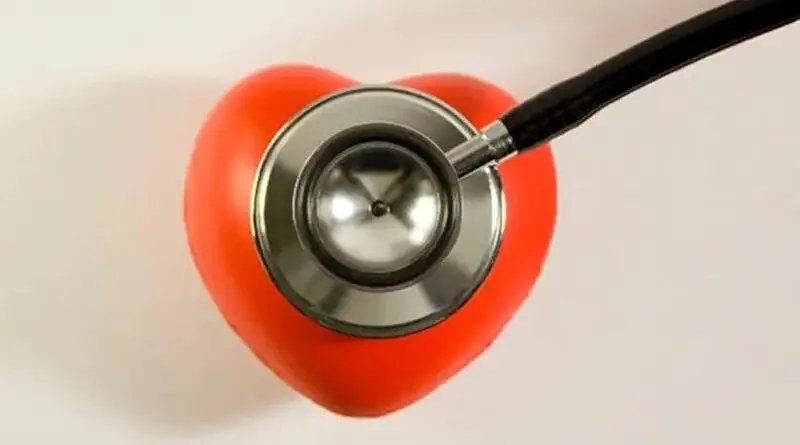COVID Infection, And Vaccination, Linked To Heart Condition
Investigators from the Smidt Heart Institute at Cedars-Sinai validated the link between a debilitating heart condition and COVID-19 and, to a lesser extent, a novel link between the same condition and COVID-19 vaccination.
Their findings, published in the peer-reviewed journal Nature Cardiovascular Research, suggest that a small percentage of patients vaccinated against COVID-19 may develop postural orthostatic tachycardia syndrome, or POTS. The investigators also found that those diagnosed with COVID-19 are five times more likely to develop the same cardiac condition after infection than after vaccination, emphasizing the importance of the vaccine.
“The main message here is that while we see a potential link between COVID-19 vaccination and POTS, preventing COVID-19 through vaccination is still the best way to reduce your risk of developing POTS,” said Alan C. Kwan, MD, first and corresponding author of the study and a cardiovascular specialist at Cedars-Sinai.
Postural orthostatic tachycardia syndrome is a nervous system-related condition that most commonly affects young women of childbearing age. The most identifiable POTS symptom is a rapid increase in the heartbeat of more than 30 beats per minute, or a heart rate that exceeds 120 beats per minute, within 10 minutes of standing.
Other symptoms include fainting, dizziness and fatigue, although some patients with severe disease may also experience migraine, increased urination, sweaty extremities, anxiety, and tremor.
To validate their findings, study authors used data from 284,592 vaccinated patients treated within the broader Cedars-Sinai Health System between the years 2020 and 2022, as well as 12,460 Cedars-Sinai patients with COVID-19.
“From this analysis, we found that the odds of developing POTS are higher 90 days after vaccine exposure than the 90 days prior to exposure,” said Kwan. “We also found that the relative odds of POTS were higher than would be explained by increases in visits to physicians after vaccination or infection.”
Kwan emphasizes that despite this finding, the rates of POTS after vaccination were much lower than rates of new POTS diagnosis after COVID-19.
“This knowledge identifies a possible—yet still relatively slim—association between COVID-19 vaccination and POTS,” said Kwan.
Many patients—especially those who developed POTS prior to the COVID-19 pandemic—spent years trying to get properly diagnosed. This is because many healthcare providers are unfamiliar with the disease and its symptoms, which often can be incorrectly attributed to chronic fatigue syndrome or other conditions. However, COVID-19 has expanded the medical field’s understanding of POTS.
“In an unexpected but important way, the COVID-19 pandemic brought a great deal of awareness to POTS—both to patients and providers,” said Peng-Sheng Chen, MD, an expert on the condition who leads one of only a few POTS specialty clinics in the nation. “Given a broader understanding of the disease, many patients can be diagnosed more quickly permitting earlier interventions that can greatly improve their symptoms.”
Many effective interventions involve lifestyle modifications, Chen says, include avoiding triggers such as prolonged standing, extreme heat, extreme cold and alcoholic beverages. Additional recommended measures may include eating a high-sodium diet and wearing abdominal or lower body compression garments. Certain medical therapies can also be considered.
Patients treated for POTS at the Smidt Heart Institute often are encouraged to join the cardiac rehabilitation program, which aims to strengthen the body and heart.
While the Nature Cardiovascular Research study sheds an important light on vaccinations and POTS, researchers say it has its limitations. The hope, however, is this new knowledge will help improve conversations around COVID-19 and vaccines.
“We recognize as clinicians that side effects from vaccines can vary in type and severity, even if still uncommon overall. We hope that clearer data and improved understanding will eventually enhance medical trust and quality of care as well as communications around vaccines,” said Kwan. “Ultimately, our goal is to optimize vaccine uptake.”


Most likely this affects vaccinated people that got the jab in a blood vessel. There are a few cases that escaped the YouTube censorship telling their stories. It would be very simple to avoid, if the ones administering the vaccine would aspirate the needle, but they were instructed not to by the CDC. I had to insist in both doses that the nurse would aspirate the needle, and my request was met with opposition and arguments against it. Eventually they said they’d do it as I wanted.